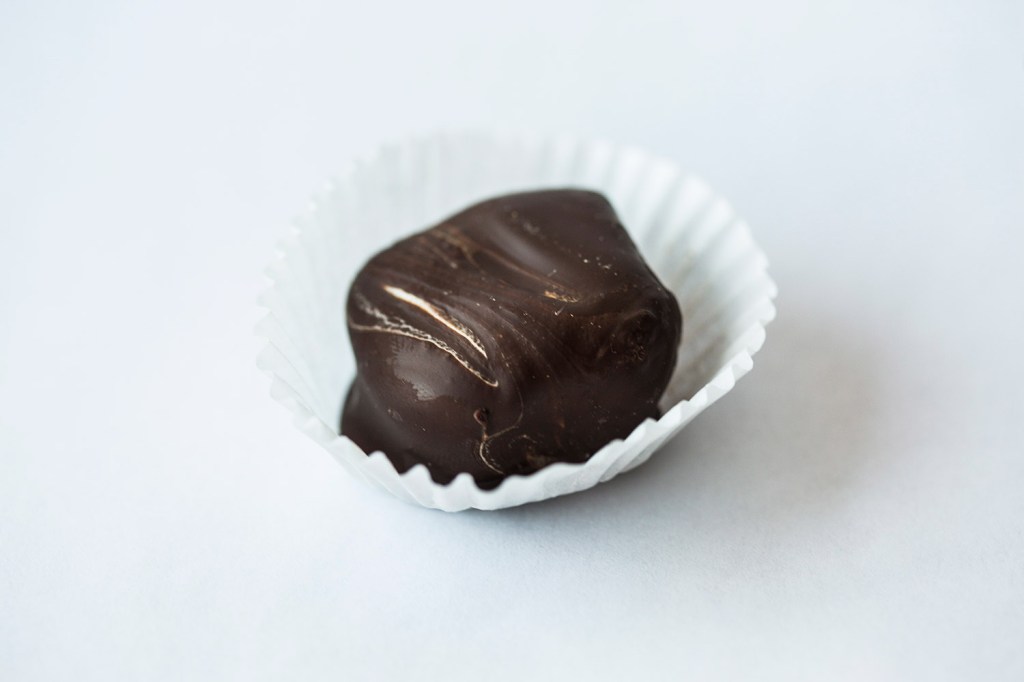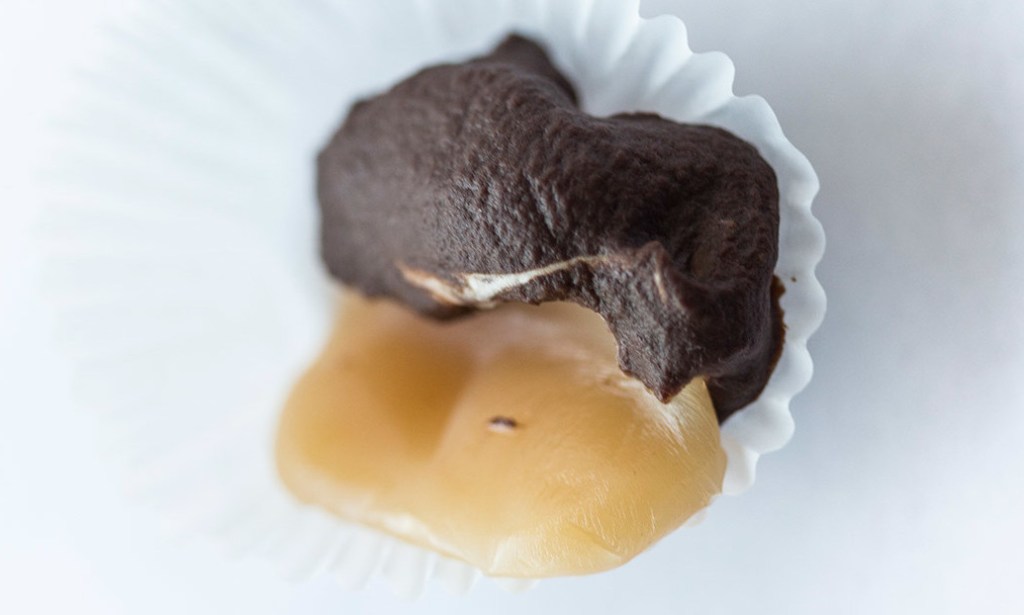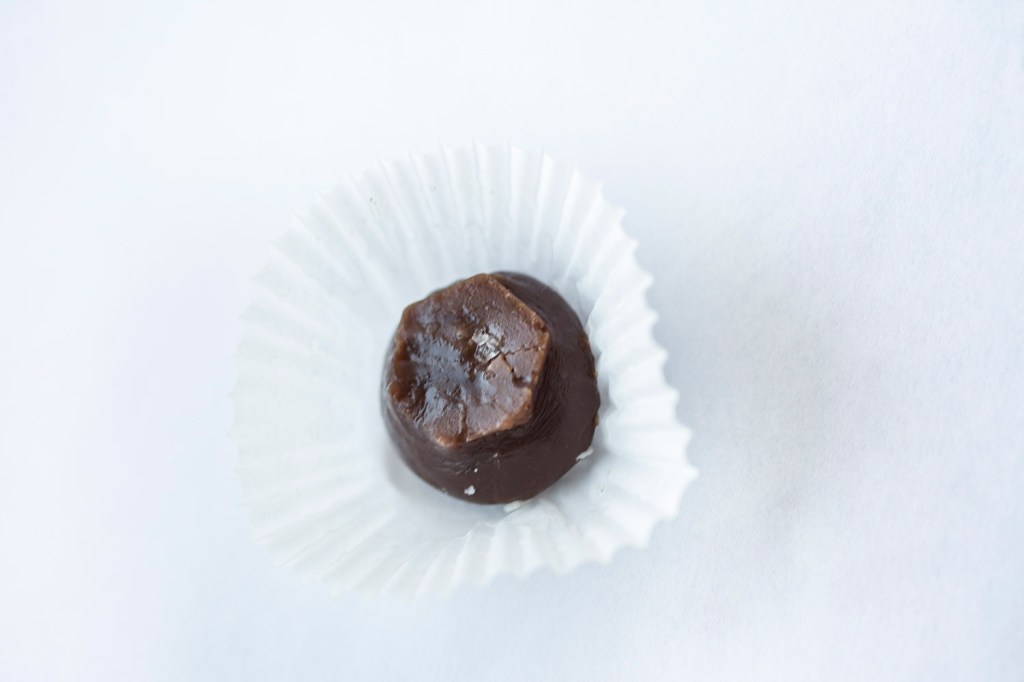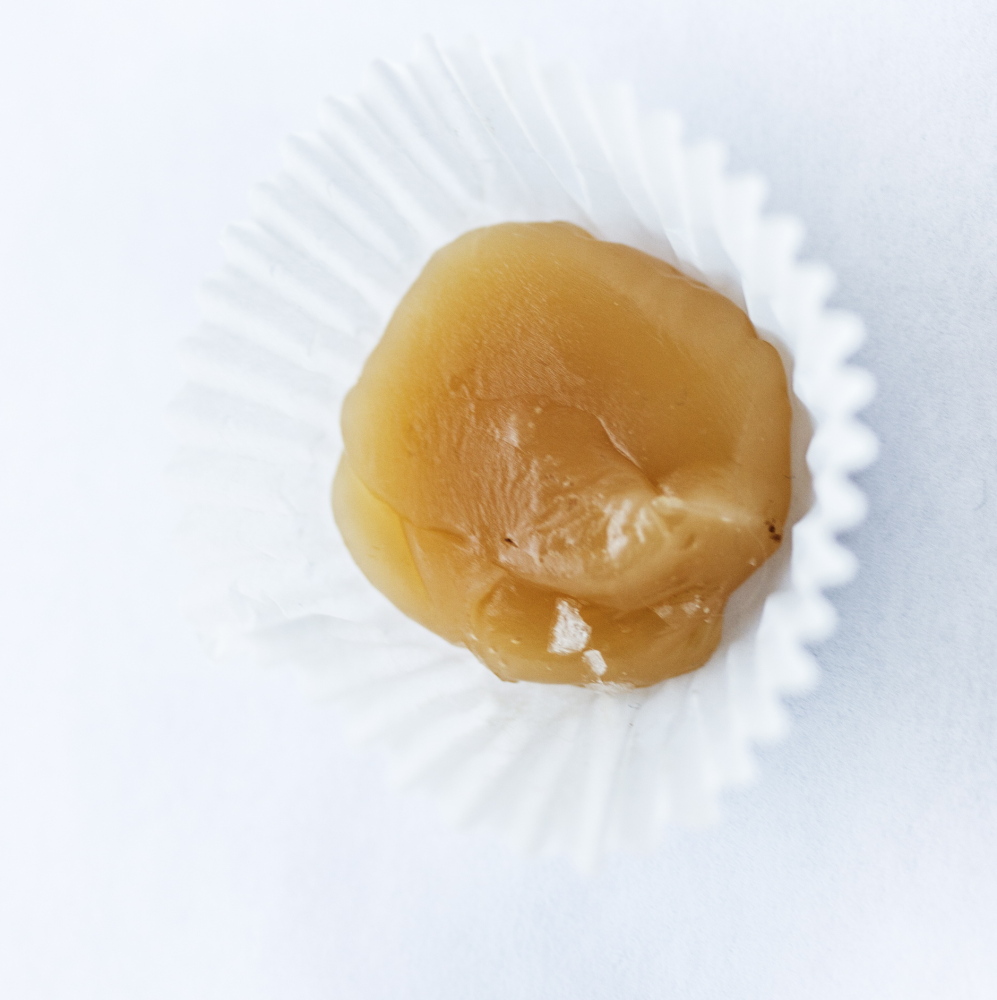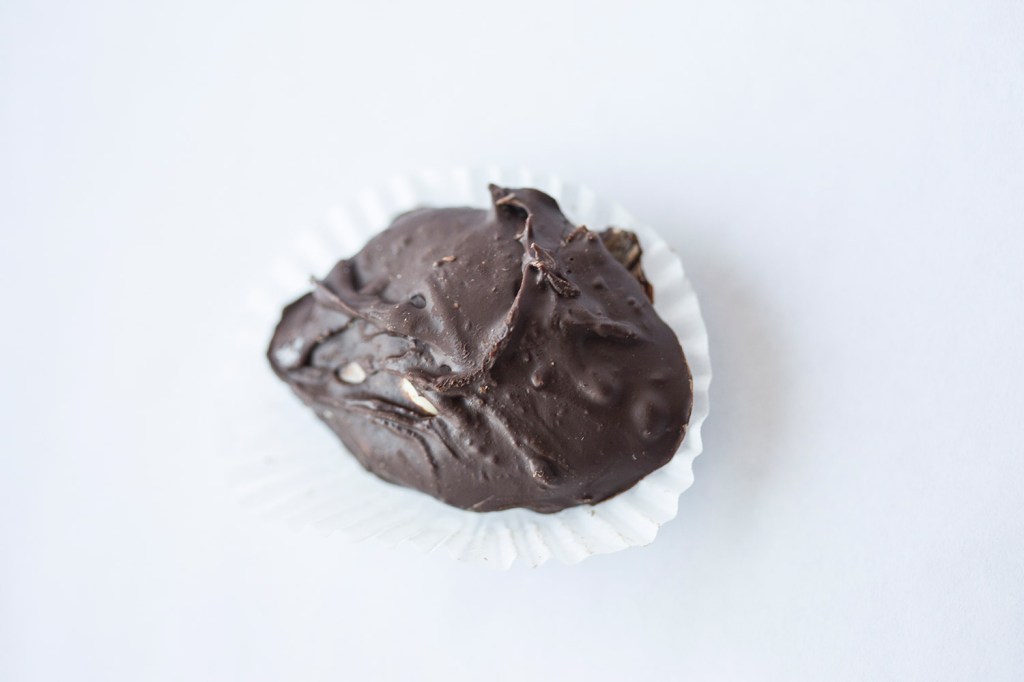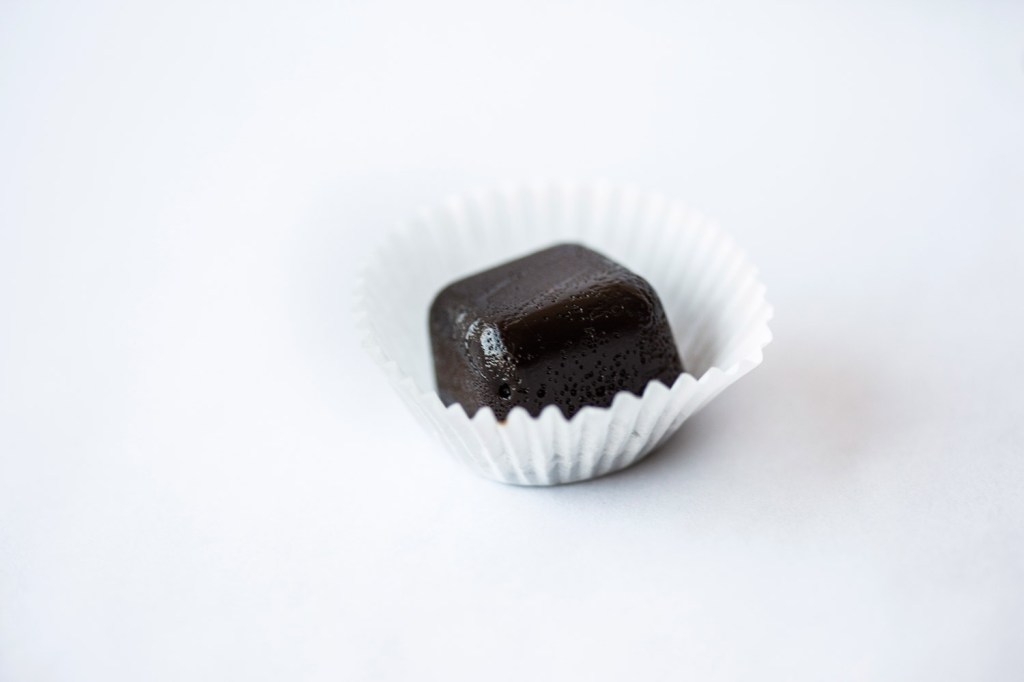This is a story about attempting to up my game as a holiday candy maker, but apologies in advance: It is not a food story with a happy Martha Stewart-style ending. My original intention was to deliver both professional-looking gifts of salted caramels and vanilla buttercreams and a story about how you too could transform into the son or daughter of Lady Godiva or Fanny Farmer. There would be bows on both candy and the candy story.
Instead, I’m going to confess to failure.
Or rather, muddling through nine batches of caramels and three of buttercreams, with many losses and only small gains along the way. Which is fitting, because that’s how the whole candy making saga started for me.
RICH HOUSE, POOR HOUSE
When I moved back to Maine four years ago, I felt rich. I had just bought my first house, which was big, beautiful and kissed with the romance of being built in 1875. You Mainers are already laughing. The “new” roof began to leak, the pipes froze, the bathtub fell through the floor and so forth. You Mainers know there’s a dark tale involving a furnace still to come. At any rate, by year two, for reasons of fiscal responsibility, I ceased to buy Christmas presents for everyone but the children in my life.
But what would I do about showing holiday cheer? My son has four grand- and step-grandparents on his father’s side. And what about the aftercare providers, dog sitters and people who had been kind to me during these various times of disasters?
I would make them candy, and not just any confection, but my favorites, starting with salted caramels with chocolate.
As the years have passed, all have sworn they enjoyed them, and only one person that I know of has lost a crown eating them. But my candies have been motley looking, sometimes grainy, often too hard, never shapely. One year I tried the molasses-based recipe for chocolate caramels in Amanda Hesser’s generally spot-on “New York Times Cookbook” and produced something so penitential that even the Ingalls family wouldn’t have eaten them during The Long Winter.
THE PATH TO RUIN
Growing up, getting to the closest candy store meant plunging through the lilac bushes, dashing around our neighbor’s garden, vaulting over her split rail fence and maybe running 20 yards past that. The round trip could be completed in that exquisite measure of time in which one ponders spitting out an atomic fire ball to let things cool off.
Higgins neighborhood store was no bigger than the average McMansion-style bathroom and run by an elderly woman and her nephew. Both are gone now, so I will mention, respectfully and with love, that the elderly woman had some moles, such that may have caused my siblings and I to question whether or not she was a witch. Such was my love of candy that this did not stand in the way of my pilfering small change and making that mad 100-yard dash to Higgins, aka “Higs,” on a daily basis. There were other things sold at Higs, aspirin, beer, probably toilet paper, the stuff of convenience stores, but I was there for my particular conveniences, the Sugar Babies and the Forever Yours.
That was the cheap candy. Good candy, the quality stuff, was always a part of our holiday experience. Typically we bought boxes of Fanny Farmer mixed chews and buttercreams or bags of mint lentils from the candy counter at Jordan Marsh in the Maine Mall. The problem with these purchases was that they had to be designated as gifts to some specific member of the family, typically my father, who was notoriously hard to shop for otherwise. He meted them out one at a time from their spot inside his desk. Not stingily, mind you, but they were his present to share.
It seemed to me then that having access to unlimited amounts of fine candy was a goal akin to getting into college.
My mother warmly welcomed the kitchen company of any of her small children eager to experiment, surprising, given that she was better known for her oatmeal bread than her patience. One year, the two of us made vanilla buttercreams, fat balls of butter and confectioners’ sugar coated in chocolate. The memory of them, lined up on the counter, slightly ungainly but absolutely luscious, is as much a high point in my childhood Christmases as the year I received my first pair of cross country skis. It always puzzled me why they never became a tradition.
With these gifts of candy then, I am not just being a cheapskate. I’m giving love and evoking the ghost of that joy of childhood. It is as if I’m giving someone a month’s worth of free trips to Higgins, but with classier ingredients. Dean’s Sweets at Whitman’s rates.
Which is not to say this is an easy way out. There’s my time, including at least one painful trip to Jo-Ann Fabric and Crafts in mid-December, fraught with anxiety over picking inexpensive but attractive boxes, not to mention the post office. Even trying to do a non-commercial gift always seems to require a trip out to the world of commerce.
GETTING EQUIPPED
My 2014 candy plans have been complicated by a broken arm. My usual method involves pouring hot caramel into a wax-lined Pyrex dish, waiting for it to cool and then slicing it with a chef’s knife. (Or, as was the case last year, whacking the dense cube with a meat tenderizer and calling my creation “toffee.”) The pieces always look haphazard, no matter how careful I am, and now my right arm doesn’t have the strength to make those cuts.
What to do?
The Scarborough chocolatier Len Libby has been in business since 1926 and makes a Maine Sea Salt Caramel that looks exactly like what I dream of producing, so I called – at their busiest time of the year – to ask a series of pesky questions. Like how to make more uniform candy. Ethan Forbes, a recent Worcester Polytechnic Institute graduate who has been working at Len Libby on and off since high school, explained that they use a machine, “a big rotating blade with about 30 blades on it,” to achieve their neat squares. “That’s the easiest way to do it,” he added. I asked Forbes what he thought of using candy molds, which are usually used for softer candies. He cautiously ventured that the idea had potential.
At LeRoux Kitchen in Portland, a helpful sales clerk steered me from the candy molds to an enticing array of silicon ice cube trays. I sprung for two, one that would make neat cubes and the other small, neat hexagons. I went home, made a batch of David Lebovitz’s Salted Butter Caramels and poured them into the molds, which I’d coated with a nonstick spray. Caramel recipes follow the same basic steps: boil sugar and corn syrup (key for chewability), add cream, vanilla, salt and perhaps chocolate. Where they vary tends to be when these last items are added and the maximum temperatures to be reached. But because things can go terribly wrong, I’ve clung to the recipes I know.
The smoke in the kitchen and the deadly dark color of the caramel should have been cause for alarm. But I poured and then hovered. In about two minutes, they firmed into tidy lumps of coal, which members of my household bravely attempted to eat. They were bitter, slippery from the spray and entirely inedible.
The first rule of the Internet is Never Read the Comments, but it is wise to make an exception for recipes. The best luck I’ve had has been with an Epicurious “four fork” recipe for Fleur de Sel caramels, which average a 96 percent “would make it again” assessment. After checking Lebovitz’s glowing comments, I knew it had to be me at fault. I regrouped after a trip to the supermarket for a replacement candy thermometer and more sugar and heavy cream.
In the next batch, I forgot the last 2 tablespoons of butter and the lid of the new candy thermometer melted onto the rim of the pot, but the results, sprinkled with sea salt a minute or two after the pour, tasted and looked so good it didn’t matter.
Sure that I had the right method with caramels, I turned to my next mission – vanilla buttercreams coated in chocolate, which I hoped would be as dazzling as those I had made 40 years ago with my mother. But recipes were much harder to come by; clearly buttercreams are not in vogue the way salted caramels are. A recipe in Hesser’s book for cream chocolates made without butter filled the kitchen with a gorgeously sugary smell on the way to the requisite 240 degree temperature (OK, maybe I went a little past 240). After being whipped in the KitchenAid for 10 minutes, the mixture was supposed to thicken but still be malleable enough to form into balls.
Or, as was the case, make a reasonable substitute for thin-set mortar in a tiling job. Or caulking the storm windows in your drafty old house.
I tasted a piece of this cement, regardless – it was far from the flavor sensation I was going for anyway. Pasty sugar. Gross.
Next up, the buttercream recipe from the Land o’ Lakes website, which calls for both butter and cream cheese (I used more of the former and less of the latter) and a rather shocking 4 cups of confectioners’ sugar.
I pressed the promising results into the silicon molds and into a proper candy mold from Wilton that cost me $2.99 at LeRoux and turned out to be made of the same kind of barely sturdy plastic used to pack lettuces. They went into the freezer to chill; I’d dip them in the morning.
The last thing I did that night was put the good caramels, now cool to the touch, on a cookie rack. I turned out the light feeling smug.
THE COLD LIGHT OF DAY
By morning my caramels had mutated, draping themselves over the wire rungs of the cookie sheet and oozing lazily into something closer to the symbol for pi than the desired lozenges. I followed some bad online advice about dipping chocolate, which caused my chocolate to seize into a granular glop. The Wilton candy mold refused to give up its neat half-circles of buttercream. The buttercreams themselves had an abrasive quality, tasting mostly of confectioners’ sugar, which is to say, dusty even though moist. They shed chocolate as efficiently as a wet dog shaking off seawater.
I’d made four batches of candy and didn’t want to give any of them to anyone. I dipped the sturdier pieces in the glop, put the buttercreams back in the freezer and turned to Mark Bittman.
The author of the “How to Cook Everything” series is such a nutritional scold that I hadn’t thought of him as a potential tutor in candy-related issues, but he did say everything. And in the latest edition of that core book, I found a caramel recipe with a chocolate variation. Everything – including the chocolate – in the pot at once and one boil, instead of Lebovitz’s two-part boil. It was beautifully simple and they were delicious but, like a woman eating all her mistakes, lost their shape in just a few hours.
But I finally got it; I needed more heat. But not much. The next batch was positively shipshape. My confidence growing, I took a whack at another butterless buttercream, the Opera Creams from my 1967 edition of “Joy of Cooking.” They sounded eccentrically old-fashioned. These turned out softer and creamier than the with-butter version I’d already made; I might not eat them at the opera, but watching Amazon’s “Transparent?” Definitely.
LESSONS FROM JOY
That old “Joy of Cooking” is the closest thing I have to my mother’s 1950s era “Joy.” It has 17 pages of candy recipes and instructions, including a fine section on tempering chocolate. And in the opening of the candy chapter I found a possible explanation for her willingness to welcome me into the kitchen; maybe she was listening to “Joy”: “The fudge pot is responsible for the beginnings of many a good cook. So be tolerant when, some rainy day, your children take an interest in the sweeter side of kitchen life.”
My son’s interest is primarily as a taster. He pronounced the Opera Creams the best thing I’d made, and though they’re a headache, they felt like the kind of luxury I wanted to give to people for Christmas. My partner cast his eyes heavenward in pleasure over the classic buttercreams, which means they’ll be a part of my candy making wheelhouse from now on. (I do understand now why my mother did not turn our candy making into a tradition; the decadence can be overwhelming.)
Next year, I won’t worry anymore about which caramel recipe I use, because as our Food editor pointed out, with furrowed brow, halfway through my whining about my various caramel traumas, they’re essentially all the same. I may even get braver, throwing in some spice, maybe try out a turtle.
Will I mess up in the future? Absolutely. But less often and with less waste (halfway through this project, I learned the power of halving a recipe when I’m experimenting) and with more understanding of the components beyond flavor in a taste memory: time, place, mood and company. That first time making candy, greed inspired industry. Now it’s about making sure that people know I care. My limited budget may check the present buying, but the other limitations? Those I can fight.
Now to get these things out of the house …
“JOY OF COOKING” OPERA CREAMS
You won’t find these in the newfangled “Joy” of the late 1990s, which has a healthier orientation than the old. The recipe is terse, and seems bizarre, but yielded intriguing results. I’ve added some of my own instructions. If you are a nervous candy maker, half the recipe the first time you make it. You’ll need a candy thermometer for this recipe.
Bring the following to a boil in your favorite candy making pan (mine is a tall, 2-quart saucepan).
2 cups granulated sugar
3/4 cup heavy cream
1 cup milk
2 tablespoons light corn syrup
1/8 teaspoon salt
1 teaspoon vanilla extract
Bittersweet chocolate chips, for dipping
Combine, cover and cook the sugar, cream, milk, corn syrup and salt for about 3 minutes until the steam has washed down any crystals on the sides of the pan. (This seems like a great approach in all candy making, so I adopted it as my method for caramels as well.) Uncover the pot and let the mixture cook over low heat until 238 degrees. This will take what feels like forever. Remove from heat. Add the vanilla. Cool to 110 degrees. This will take even longer. Go have some eggnog.
Beat this mixture until it is creamy. “Joy” is a little casual about how long this might be. For me, it was about 15 minutes, including the time it took to figure out that the recipe was really serious about letting the mixture cool to 110 degrees.
Pour the results into a plastic vessel to cool. When it’s set, it will still be fairly gooey but can be scraped out with a spoon and rolled into a little ball to dip in chocolate. I used Guittard extra bittersweet chocolate chips, slowly melted over a double boiler. Set to dry on wax paper, then chill at least an hour.
WINTER HEXAGONS, AKA BASTARDIZED BITTMAN’S BITES
These got their names from the honeycombed silicon ice cube tray we poured them into, but you could use any form you wanted. The recipe is really Mark Bittman’s – with the most minor of revisions. For a milder chocolate flavor, use semisweet chips. I use Guittard chips, absolutely worth the higher price than Nestle. You’ll need a candy thermometer for this recipe.
11/2 cups heavy cream
2 cups granulated sugar
1/2 cup light corn syrup
2 tablespoons unsalted butter
Pinch salt for the pot, plus some fine sea salt to sprinkle (I use Maldon Sea Salt Flakes)
4 ounces extra-bittersweet chocolate chips
Put all ingredients in a pot. Stir only until the sugar and chocolate are dissolved, then cook over medium heat until the mixture reaches 249 degrees on a candy thermometer. Stir in 1 teaspoon of vanilla, then pour caramel into (ungreased) silicon mold, sprinkle with sea salt and let cool. Leave in the molds at least 2 hours.
To release, turn the molds upside down and press with your thumbs, if need be, just like releasing ice cubes.
Send questions/comments to the editors.


